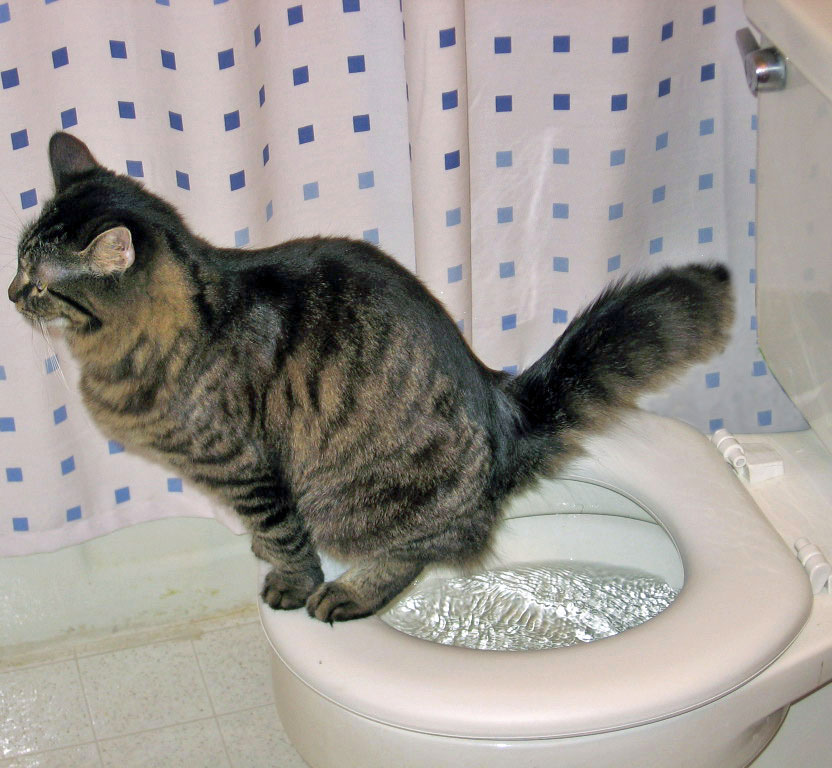What are your opinions regarding How to Dispose of Cat Poop and Litter Without Plastic Bags?

Intro
As cat proprietors, it's necessary to bear in mind exactly how we get rid of our feline pals' waste. While it might appear practical to flush pet cat poop down the toilet, this method can have harmful effects for both the setting and human health and wellness.
Alternatives to Flushing
Thankfully, there are more secure and more responsible means to get rid of pet cat poop. Consider the following choices:
1. Scoop and Dispose in Trash
The most typical technique of disposing of pet cat poop is to scoop it right into an eco-friendly bag and toss it in the trash. Be sure to use a specialized clutter scoop and deal with the waste quickly.
2. Use Biodegradable Litter
Go with naturally degradable cat clutter made from products such as corn or wheat. These litters are eco-friendly and can be safely dealt with in the trash.
3. Bury in the Yard
If you have a yard, think about hiding pet cat waste in a marked location far from vegetable gardens and water resources. Make certain to dig deep sufficient to prevent contamination of groundwater.
4. Set Up a Pet Waste Disposal System
Purchase an animal waste disposal system especially created for feline waste. These systems utilize enzymes to break down the waste, lowering odor and environmental influence.
Wellness Risks
Along with ecological problems, purging feline waste can additionally position health and wellness risks to people. Pet cat feces might have Toxoplasma gondii, a parasite that can cause toxoplasmosis-- a possibly severe ailment, particularly for expectant ladies and people with weakened body immune systems.
Environmental Impact
Purging feline poop introduces unsafe virus and parasites into the supply of water, positioning a significant danger to aquatic ecological communities. These impurities can negatively influence marine life and concession water high quality.
Conclusion
Accountable animal possession prolongs beyond providing food and sanctuary-- it likewise involves appropriate waste monitoring. By avoiding purging cat poop down the commode and going with different disposal approaches, we can lessen our environmental footprint and secure human wellness.
Why Can’t I Flush Cat Poop?
It Spreads a Parasite
Cats are frequently infected with a parasite called toxoplasma gondii. The parasite causes an infection called toxoplasmosis. It is usually harmless to cats. The parasite only uses cat poop as a host for its eggs. Otherwise, the cat’s immune system usually keeps the infection at low enough levels to maintain its own health. But it does not stop the develop of eggs. These eggs are tiny and surprisingly tough. They may survive for a year before they begin to grow. But that’s the problem.
Our wastewater system is not designed to deal with toxoplasmosis eggs. Instead, most eggs will flush from your toilet into sewers and wastewater management plants. After the sewage is treated for many other harmful things in it, it is typically released into local rivers, lakes, or oceans. Here, the toxoplasmosis eggs can find new hosts, including starfish, crabs, otters, and many other wildlife. For many, this is a significant risk to their health. Toxoplasmosis can also end up infecting water sources that are important for agriculture, which means our deer, pigs, and sheep can get infected too.
Is There Risk to Humans?
There can be a risk to human life from flushing cat poop down the toilet. If you do so, the parasites from your cat’s poop can end up in shellfish, game animals, or livestock. If this meat is then served raw or undercooked, the people who eat it can get sick.
In fact, according to the CDC, 40 million people in the United States are infected with toxoplasma gondii. They get it from exposure to infected seafood, or from some kind of cat poop contamination, like drinking from a stream that is contaminated or touching anything that has come into contact with cat poop. That includes just cleaning a cat litter box.
Most people who get infected with these parasites will not develop any symptoms. However, for pregnant women or for those with compromised immune systems, the parasite can cause severe health problems.
How to Handle Cat Poop
The best way to handle cat poop is actually to clean the box more often. The eggs that the parasite sheds will not become active until one to five days after the cat poops. That means that if you clean daily, you’re much less likely to come into direct contact with infectious eggs.
That said, always dispose of cat poop in the garbage and not down the toilet. Wash your hands before and after you clean the litter box, and bring the bag of poop right outside to your garbage bins.
https://trenchlesssolutionsusa.com/why-cant-i-flush-cat-poop/

I stumbled upon that content on How to Dispose of Cat Poop and Litter Without Plastic Bags when doing a lookup on the web. Appreciated our blog entry? Please share it. Let other people locate it. Thanks a lot for your time invested reading it.
Click Here
Comments on “Avoid Plumbing Problems: Don't Flush Cat Poop Down Your Toilet - Expert Advice”